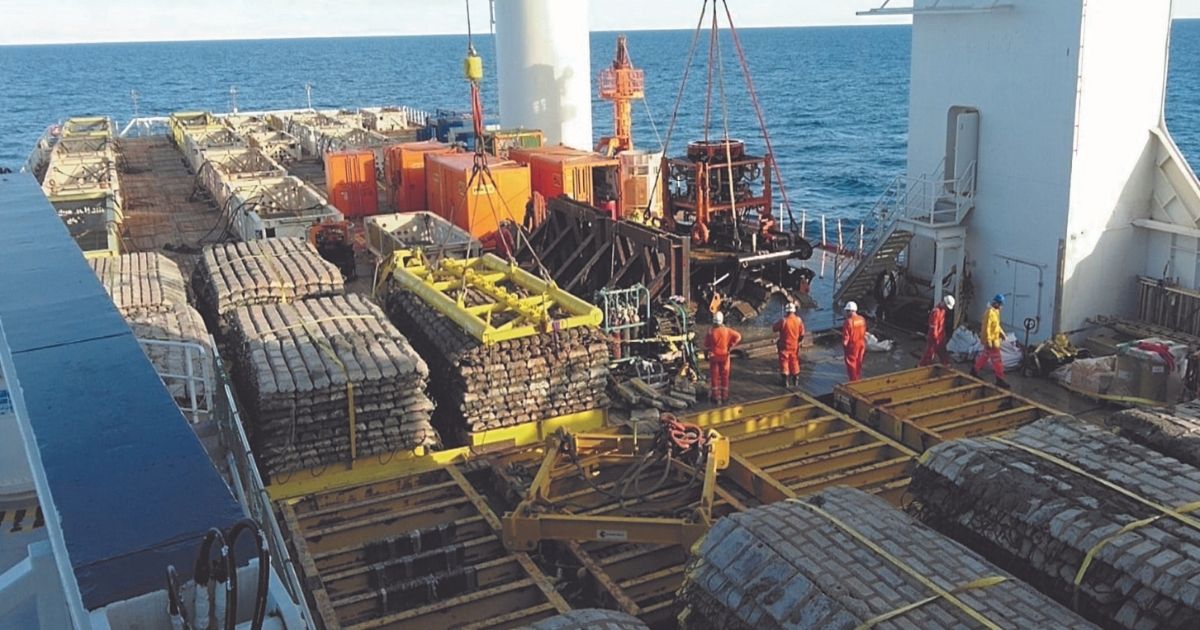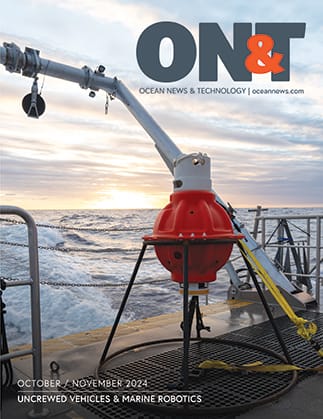The offshore works, which were carried out over 74 days, using DOF Subsea’s Skandi Acergy and Skandi Skansen vessels, saw the recovery of 135 concrete mattresses weighing approximately 800 tonnes, more than 12km of rigid pipelines, SSIV/PLEM Structures, 15.5km of flexibles and umbilicals, spoolpieces, and around 1,500 grout bags and general debris.
The material was shipped to Aberdeen Harbour’s Clipper Quay for dispersal, with 95% of the material being recycled and 4% being repurposed. Only 1% was sent to landfill as a last resort.
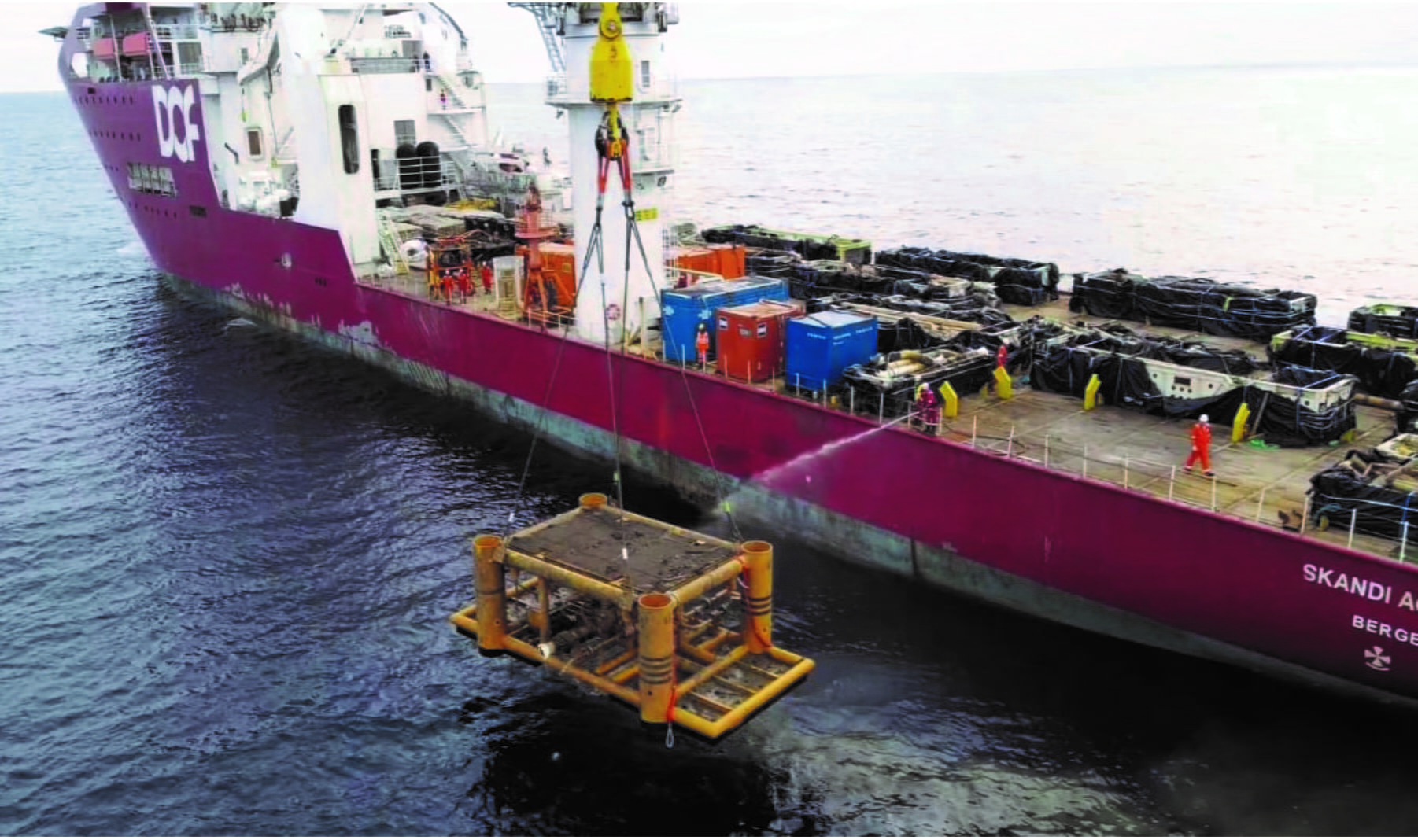 Skandi Acergy on location recovering subsea structures
Skandi Acergy on location recovering subsea structures
The recovered material was dispatched for a wide variety of uses. A total of 15 concrete mattresses were repurposed into aggregate, and used in the roads at the £350m Aberdeen Harbour extension project.. The plastic sheaths from the flexible risers and umbilicals were recycled by an approved supplier and all metal was smelted.
DOF Subsea worked closely with Scotoil Service in Aberdeen throughout the process with any NORM contaminated waste in metals or plastics removed by high pressure cleaning at Scotoil before undergoing high temperature incineration. The decontaminated metals and plastics were then recycled.
This was the second decommissioning project carried out by DOF Subsea on behalf of Repsol Sinopec in the Buchan and Hannay fields. In 2019, the company carried out EPRD services which included the 124 tonne Mid-Water Arch (MWA), still one of the largest structures ever decommissioned through Aberdeen Harbour.
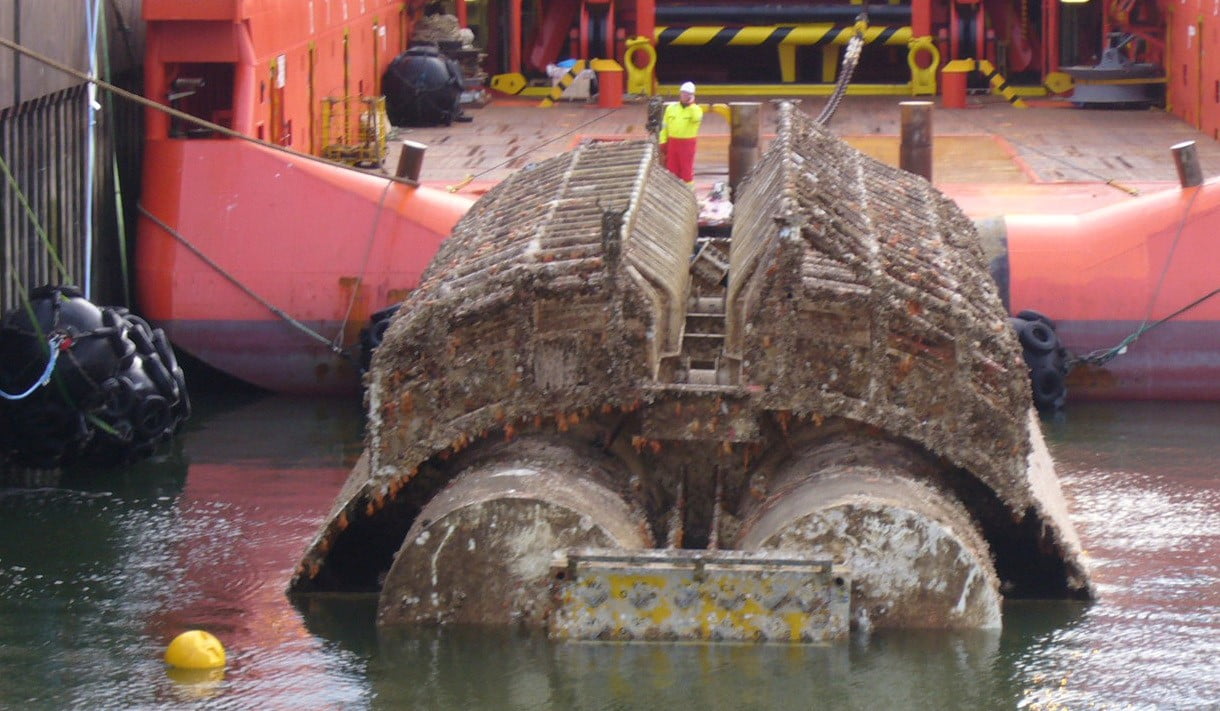 The 124 tonne Mid-Water Arch, one of the largest decommissioned through Aberdeen Harbour to date
The 124 tonne Mid-Water Arch, one of the largest decommissioned through Aberdeen Harbour to date
That project also included the recovery of risers and all associated equipment, achieving a combined recycling and repurposing rate of 97.7%.
DOF Subsea has been building its decommissioning portfolio over the past decade, and with a global support team of more than 120 engineers has delivered more than 30 projects around the world for major operators, resulting in an average reuse and recycling rate of 97%.
Jan Kristian Haukeland (DOF Subsea’s EVP Atlantic Region) commented “this project is a demonstration of the DOF Group’s capability to use our fleet of world-class vessels to deliver turnkey solutions to the subsea energy sectors, in this instance a decommissioning scope for a key repeat customer. Focusing on our company values ‘Respect, Integrity, Teamwork, Excellence and Safety’ has enabled us to work with Repsol Sinopec to attain this impressive achievement, of 99% recycling and repurposing at Buchan and Hannay.”
Luis Batalla, Head of Decommissioning at Repsol Sinopec said:
“We are delighted with this outcome as part of one of our biggest subsea decommissioning projects in the North Sea to date.
“A truly collaborative and open communication approach was taken on this project between Repsol Sinopec and DOF Subsea and I have no doubt that this helped to facilitate the success and safe execution of this part of our decommissioning programme.
“Our decommissioning strategy is focused on efficiency, performance management, innovative contracting models, technology development and fit for purpose design which aligns well with DOF Subsea and their own way of working.”
The latest project confirms DOF Subsea’s commitment to lead the way in championing environmental and social sustainability in the industry.
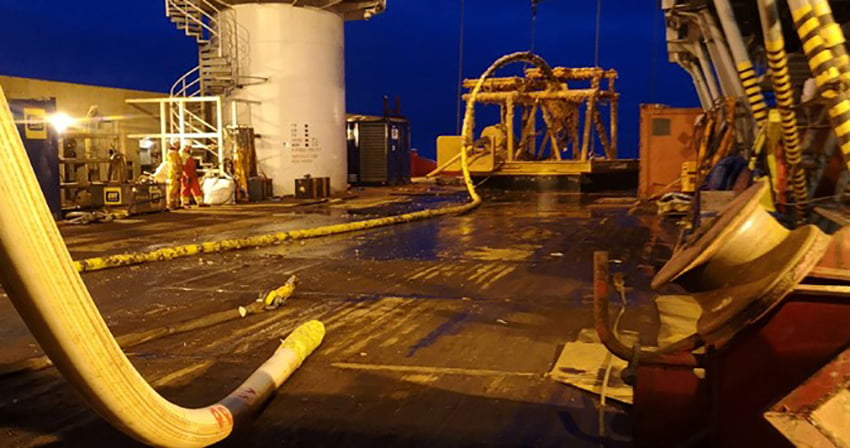 Flexible riser recovery
Flexible riser recovery
Last year, DOF Subsea was named as a Europe Climate Change Leader in the Financial Times Europe’s Climate Leaders 2021 report. Undertaken in cooperation with an independent data company, it reviewed tens of thousands of companies, scrutinising existing greenhouse gas emissions (GHG) to identify outstanding European companies that are successfully reducing their core GHG emissions relative to their revenue.
The company also holds an B rating in the Carbon Disclosure Project, a global benchmark for the world’s cities and companies leading on environmental performance. The rating places DOF Subsea in the top 35% for environmental rating.
“Being named as one of only 300 companies in the Europe Climate Leaders Report was an important recognition for DOF Subsea on a number of levels,” said Stig Clementsen (DOF Subsea Chief Sustainability Officer and SVP HSEQ). “It clearly demonstrates our leadership in reducing our GHG emissions intensity. It is also another step in achieving our strategic objectives in shaping DOF Subsea for the future, in support of our Strategy Plan to uphold our position in the top five for environmental and social sustainability in our industry.”
DOF Subsea is committed to improving the energy efficiency of its fleet. Several projects are already underway and will continue throughout 2022 and beyond, as the company moves towards its overall objective of reducing fuel consumption by 40% by 2030.
